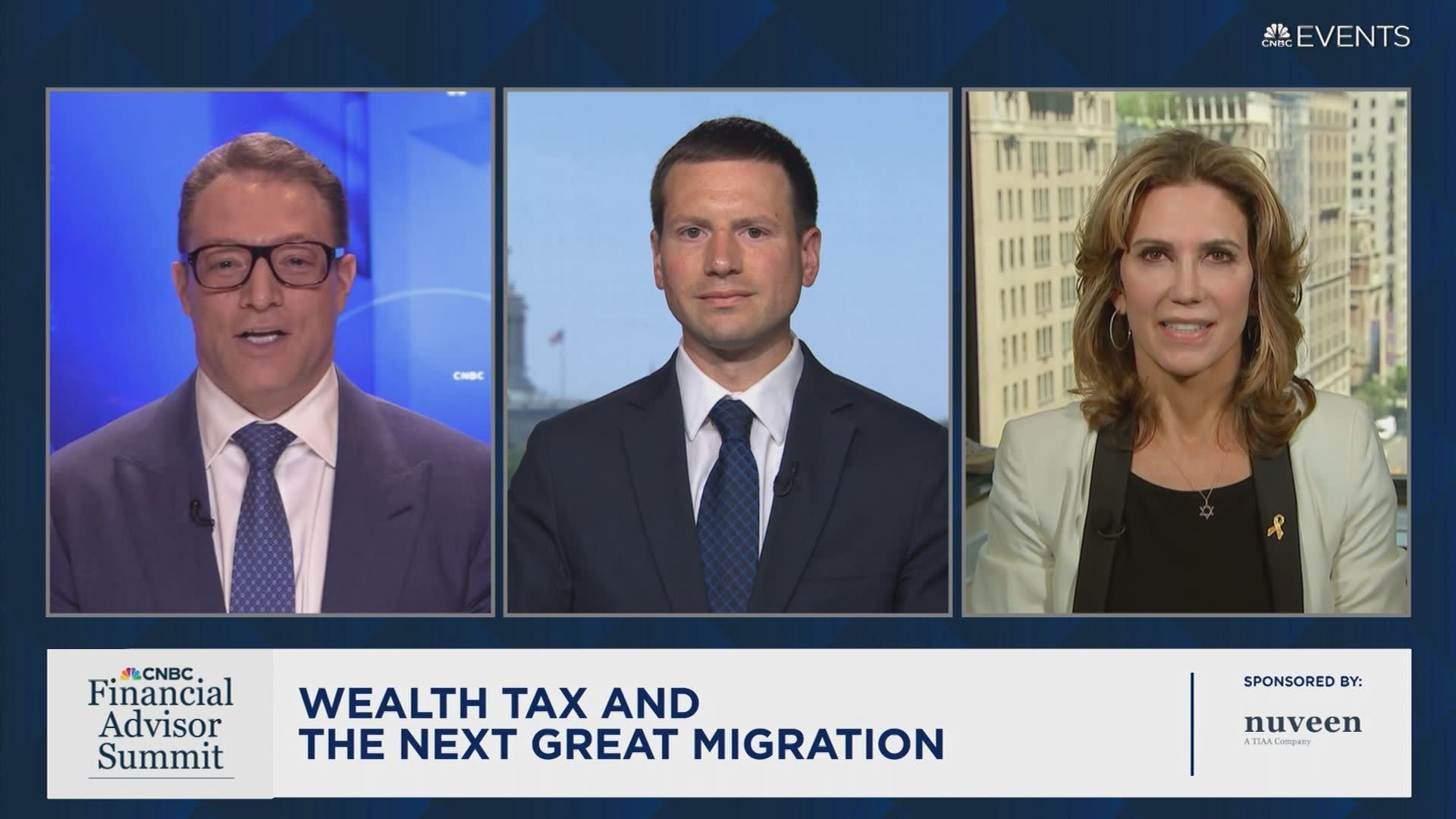People walk through a Manhattan mall on July 05, 2024 in New York City.
Spencer Platt | Getty Images News | Getty Images
LONDON — The number of global millionaires is set to keep rising over the next five years — with the U.K. a stark outlier, according to the 2024 Global Wealth Report from UBS.
The number of adults owning $1 million or more is expected to grow in 52 out of 56 developed and developing economies surveyed between 2023 and 2028. Gains will be led by tech powerhouse Taiwan, where the number of millionaires is set to jump 47% on the back of the booming microchip industry and a rise in immigration by wealthy foreigners.
That growth was followed by Turkey (43%), Kazakhstan (37%), Indonesia (32%) and Japan (28%). The two hubs in which the most global millionaires are based, the U.S. and mainland China, are set to see their figures rise 16% and 8% respectively.
However, the number of millionaires is forecast to plunge by 17% in the U.K.
Paul Donovan, chief economist at UBS Global Wealth Management, said that the U.K. currently has the third highest number of dollar millionaires in the world, which he called “far more… than it deserves to have as an economy.”
He added that countries such as France and Italy, where the number of millionaires is set to rise 16% and 9% respectively, are seeing a more “natural” growth, while any U.K. growth would be offset by capital outflows due to various “push and pull” factors.
That is partly due to natural shifts in wealth distribution as the world economy goes through structural changes and capital moves around the world, he said on a media briefing.
Other factors set to drive the decline in millionaires include the U.K.’s introduction of sanctions against Russia — with wealthy Russians having long used London as a home for their assets — and the “non-indigenous millionaire population” constantly looking for low-tax locations such as Dubai and Singapore, Donovan added.
He did not cite the U.K.’s newly-elected center-left Labour Party as a contributing factor to the forecast. He instead noted that the changes to the U.K.’s so-called “non-domiciled status” tax regime, which were kicked off by the recently-ousted Conservative government, had had a “small, not substantial” impact.
Another country where the number of dollar millionaires is forecast to decline was the Netherlands, which is estimated to see a 4% drop in such wealthy individuals.
The report meanwhile sees the number of U.S. dollar millionaires in Russia growing by 21%. Donovan said that was in part due to currency fluctuations, as well as recent commodity and energy market trends benefiting some business owners.
Rising inequality?
UBS found that global wealth growth rebounded in 2023, posting 4.2% growth after a 3% decline in 2022. The recovery was mainly led by the EMEA region (Europe, the Middle East and Africa), which grew 4.8%, versus 4.4% in Asia-Pacific and 3.5% in the Americas.
The report meanwhile presents a mixed picture on the development of wealth inequality. Between 2000 and 2030, UBS said wealth mobility — a person’s ability to move up a wealth bracket through their life — would improve overall.
People who begin in the lowest wealth bracket would have a 60% chance of moving up at least one wealth bracket, and a one-in-three chance of moving up two or more wealth brackets, the report found.
However, growing clusters of high wealth at the top of major economies are increasingly skewing average wealth figures.

“Some of these findings on individual wealth will come as no surprise to most readers, but others may well be highly unexpected. Many people may not recognize their own country. They may feel like the reported growth or decline in wealth has passed them by without them noticing,” UBS said in the report.
That is because in many countries, a rise in average wealth overlooks a sharp fall in median wealth — implying higher inequality, with wealth becoming more concentrated among the richest.
The countries in which average wealth is most out-of-kilter with median wealth include France and Mexico, in which it is higher by a factor of two. In mainland China, Hong Kong and Taiwan, it’s higher by a factor of almost three, and in the U.S., Brazil and the United Arab Emirates, it is higher by a factor of five.
Horizontal wealth transfer
While the great wealth transfer between the generations has long been discussed, UBS identified in this year’s report that wealth is not just moving downwards, but also set to go “sideways,” to spouses.
Of the roughly $83 trillion expected to be passed on over the next 20 to 25 years, UBS estimated $9 trillion would be transferred “intra-generationally” or horizontally, to spouses. Due to average life expectancy and age gaps within couples, over 10% of the great wealth transfer is set to go to women.
A spouse will typically own this inheritance for an average four years before passing it on, UBS added, with the biggest horizontal and vertical wealth transfer taking place in the Americas.

